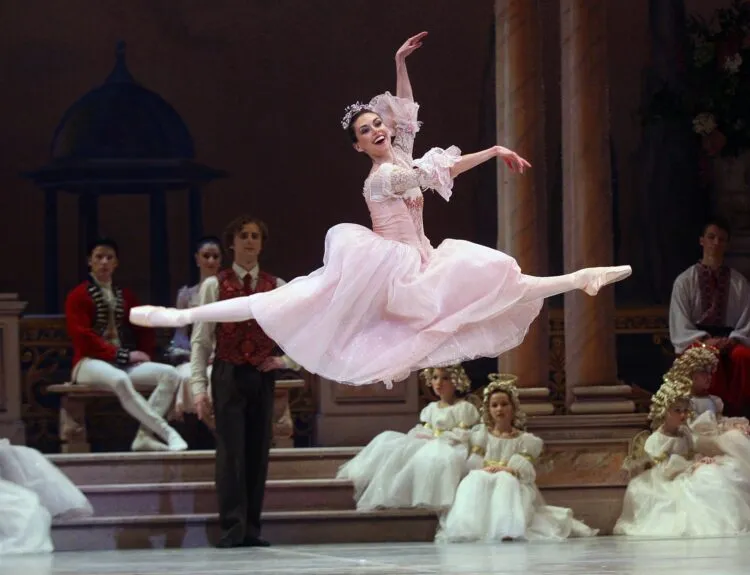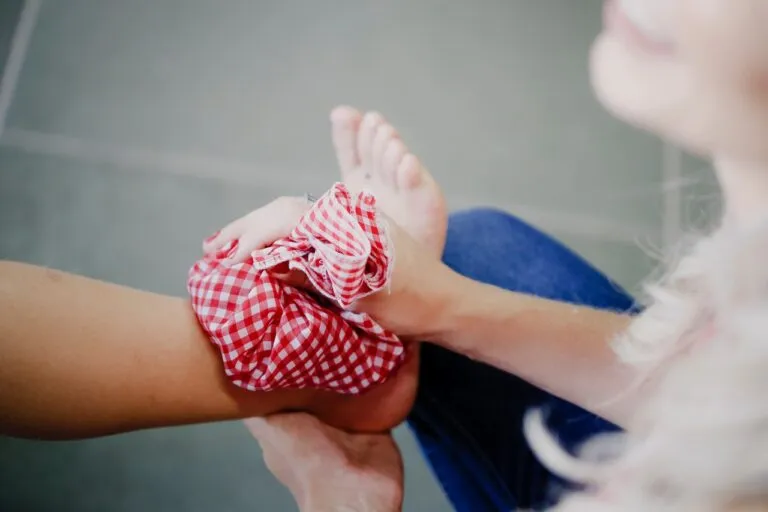ACL injuries in ballet dancers
Given the high volume of jumping performed in a typical ballet class (up to 200 jumps per 90 minute class1), you would expect ACL injuries to be ubiquitous amongst ballet dancers.
Furthermore, most ballet jumps involve landing on one leg in “external rotation,” a position that is highly associated with ACL rupture.
However, the rate of ACL injuries in dancers is over 10 times lower than other team sports1.
Why the paradox?
ACL injury and landing mechanics
One of the major risk factors for ACL injuries is poor landing mechanics: notably poor trunk control, a “valgus” knee moment, and weak hip stabilizers.
Some of the core principles of ballet technique are keeping the upper body “quiet” while jumping (trunk control), landing with “knees over toes” (avoiding a “valgus” knee moment), and pulling up on your “supporting leg” (hip stabilization).
Good landing technique
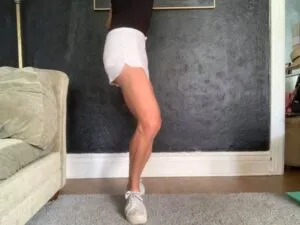

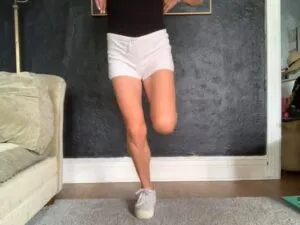
Bad landing technique



Multiple studies have confirmed that dancers have better landing biomechanics than team sport athletes2,3,4,5.
Furthermore, the gender disparity in poor landing mechanics that exists in team sport athletes, with woman being more prone to ACL tears, does not appear in dancers5.
This suggests that a daily focus on landing mechanics can help to mitigate some of the ACL risk factors inherent to adolescent female athletes5.
Impacts of ACL injury on dancers
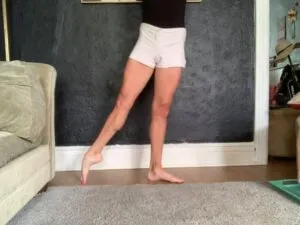
Though infrequent, ACL tears have special implications when they occur in dancers.
This is due to the unique functional and aesthetic demands that ballet places on the knee.
In ballet, the ideal aesthetic is a “hyperextended knee.”
Thus, a loss of knee extension, while troublesome for any patient, can be career ending for a ballet dancer.
This consideration should be discussed with the treating surgeon as it can influence graft choice, surgical technique, and post-operative rehabilitation.
How ACL injury occurs in ballet dancers
The most common mechanism of ACL injury in dancers is landing a “Grand Jete” which involves landing on one leg in maximum external rotation.
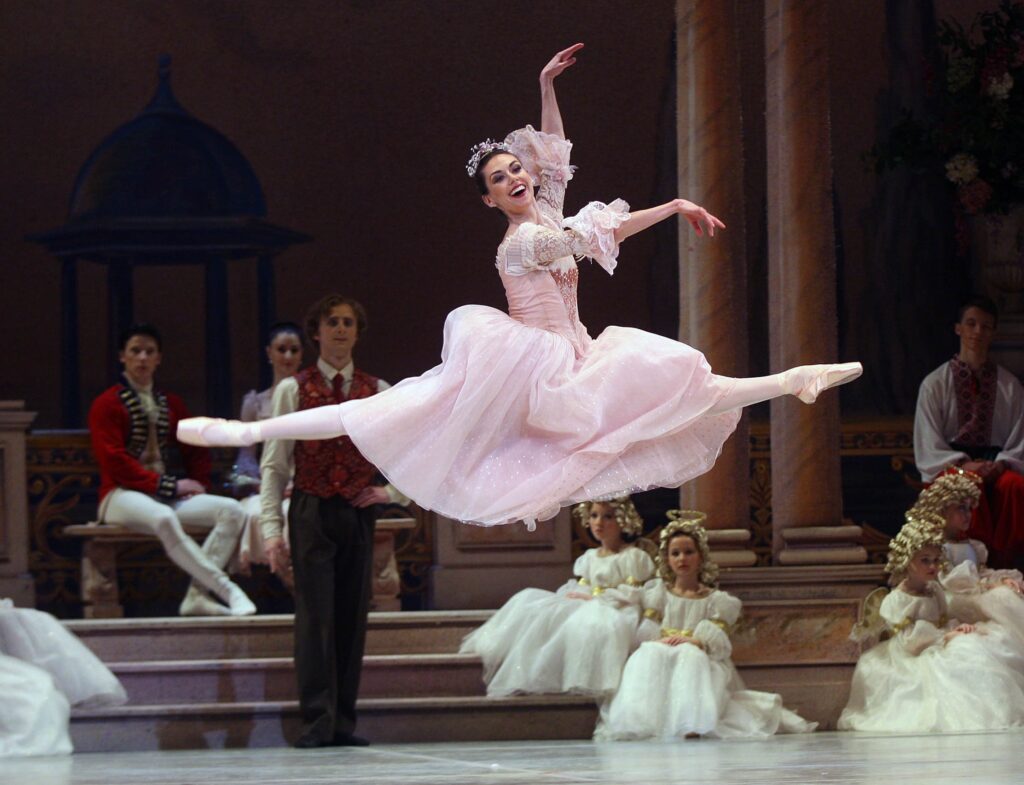
Not surprisingly, fatigue is a documented risk factor so these injuries typically occur at the end of a rehearsal day or show2.
This was the case for former soloist ballet dancer Carrie Broda whose ACL injury occurred performing a grand jete at the end of a performance of Romeo and Juliet.
She underwent ACL reconstruction with hamstring autograft and was back dancing within 1 year of her injury.
“The hardest part for me, aside from regaining full extension of the knee, was regaining the confidence to attempt a grand jete again. It was vital to set a realistic timeline for my return to dance so that I could return strong and prevent compensatory injuries.”
Carrie Broda
While ACL tears can be devastating injuries for dancers, they are by no means career ending as demonstrated by Carrie, pictured below 2 years post right ACL reconstruction.
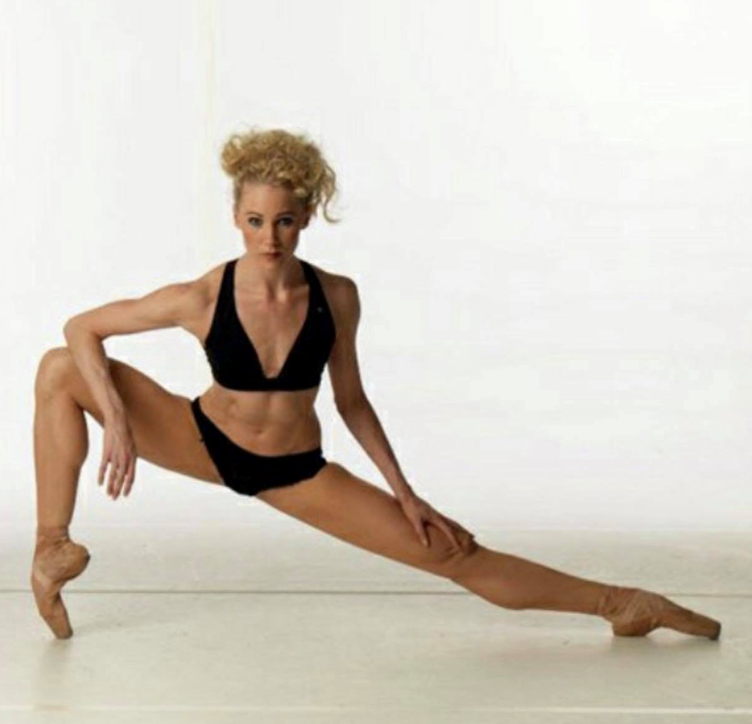
Expert Contributor

Michael James MD BSc, PGY4 Orthopaedic Surgery, University of Calgary, and former Alberta Ballet dancer.
Citations
1. Liederbach M, Dilgen FE, Rose DJ. Incidence of anterior cruciate ligament injuries among elite ballet and modern dancers: A 5-year prospective study. Am J Sports Med. 2008;36(9):1779-1788. doi:10.1177/0363546508323644
2. Liederbach M, Kremenic IJ, Orishimo KF, Pappas E, Hagins M. Comparison of landing biomechanics between male and female dancers and athletes, part 2: Influence of fatigue and implications for anterior cruciate ligament injury. Am J Sports Med. 2014;42(5):1089-1095. doi:10.1177/0363546514524525
3. Hansberger BL, Acocello S, Slater L V., Hart JM, Ambegaonkar JP. Peak lower extremity landing kinematics in dancers and nondancers. J Athl Train. 2018;53(4):379-385. doi:10.4085/1062-6050-465-16
4. Harwood A, Campbell A, Hendry D, Ng L, Wild CY. Differences in lower limb biomechanics between ballet dancers and non-dancers during functional landing tasks. Phys Ther Sport. 2018;32:180-186. doi:10.1016/j.ptsp.2018.05.005
5. Orishimo KF, Liederbach M, Kremenic IJ, Hagins M, Pappas E. Comparison of landing biomechanics between male and female dancers and athletes, part 1: Influence of sex on risk of anterior cruciate ligament injury. Am J Sports Med. 2014;42(5):1082-1088. doi:10.1177/0363546514523928

